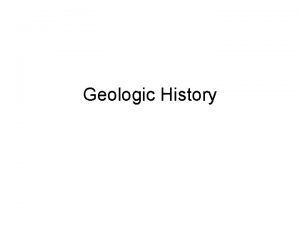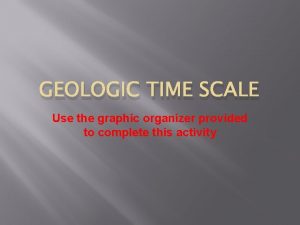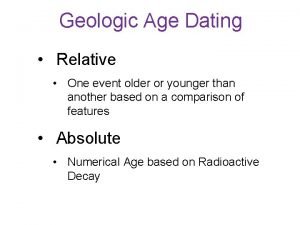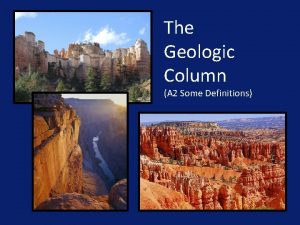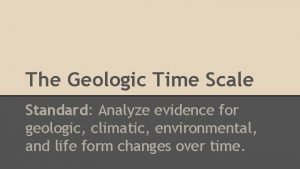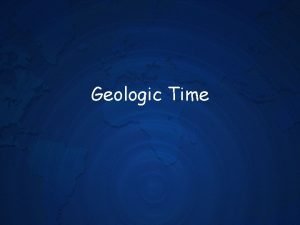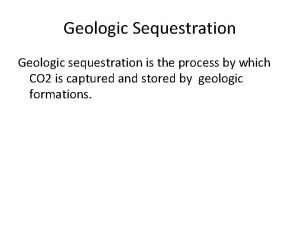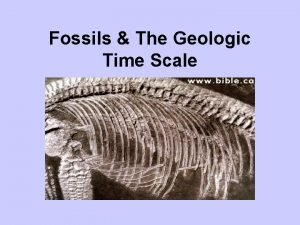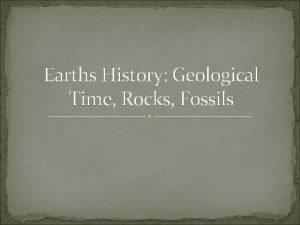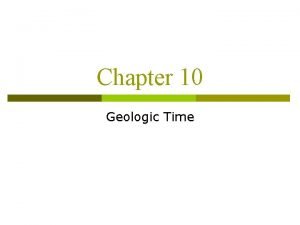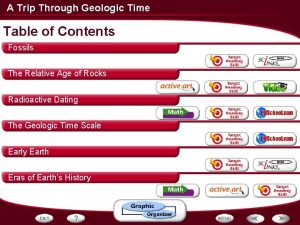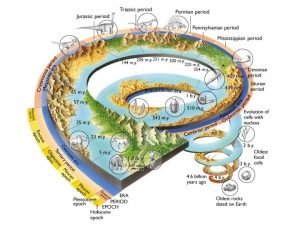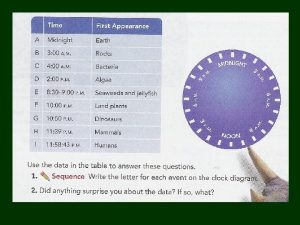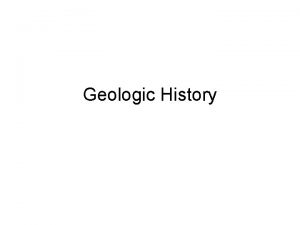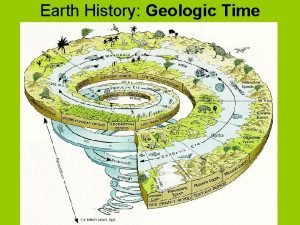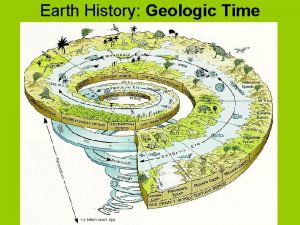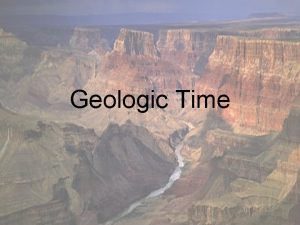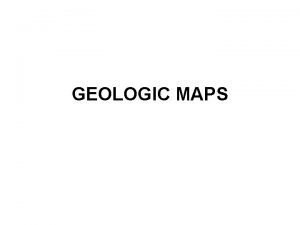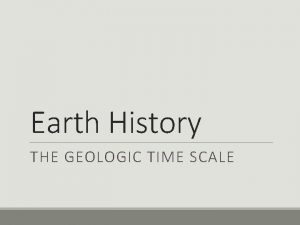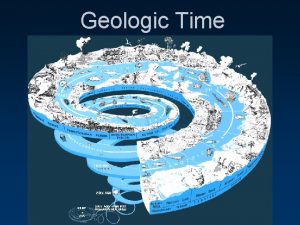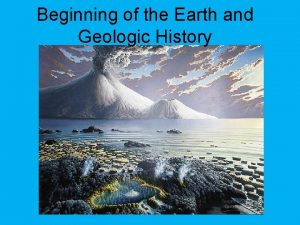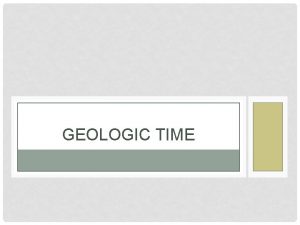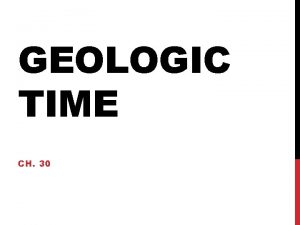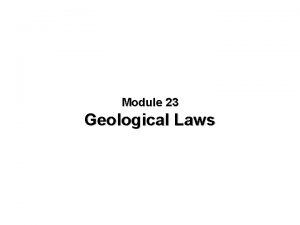Geologic History Definition Geologic History is the study

















- Slides: 17

Geologic History

Definition • Geologic History is the study and interpretation of Earth’s past. Interpreting what happened to Earth over a period of time is like solving a puzzle. The clues are examined, and from them, Earth’s geologic history is inferred.

Who’s Got The Time? • Relative Dating: Gives you an order of events (Chronology). VS • Absolute Dating: Gives you an actual age (numerical age) of a rock or fossil measured in years.

Principles of Relative Dating 1) Uniformitarianism: The idea that the processes that shape Earth’s surface today are the same processes that occurred in the geologic past. “The present is the key to the past”

Principles of Relative Dating 2) Superposition: States that the youngest rock layer is found on top and that rock age increases with depth. Exceptions – When rock layers are overturned or when a fault thrusts older rock layers over younger layers.

Superpositionyoungest to oldest

Principles of Relative Dating 3) Original Horizontality: States that sediments are deposited in horizontal layers that are parallel to the surface on which they were deposited. Therefore, when we sedimentary layers that are tilted, we assume they were tilted after they were deposited.

Principles of Relative Dating 4. Cross-Cutting Relationships: States that when numbering events in chronological order, anything abnormal that cuts through the rock feature has to be more recent than the feature it cuts. Faults and folds must be younger than the rocks in which they are found.

Cross Cutting

Evidence of Events 1) Intrusion: Forms when magma forces its way into cracks in crustal rock and solidifies. Since the rocks through which the magma moved existed prior to the intrusion, they must be older than the intrusion.

Evidence of Events 2) Extrusion: Form from lava flows on Earth’s surface and solidifies. The extrusion is younger than any rock beneath it, but older than any rock that may be on top of it. (look for contact marks)

Evidence of Events 3) Unconformity: When a new layer of rock is laid down on a surface left by erosion. It forms a buried erosion surface resulting in a huge gap in the rock record.

STEP 1 STEP 2

STEP 3 STEPS 4 -6

UNCOMFORMITYa buried surface of erosion separating two rock masses. This represents a gap in geologic time. . .

…. outlined below. . .

Practice: what happened here?
 Compare geologic time with the geologic column.
Compare geologic time with the geologic column. Original horizontality definition
Original horizontality definition Geologic time graphic organizer
Geologic time graphic organizer Pilot knob volcano
Pilot knob volcano Geologic history
Geologic history Geologic history
Geologic history Geologic column definition
Geologic column definition How is the geologic time scale organized
How is the geologic time scale organized How is the geologic time scale organized
How is the geologic time scale organized Geologic sequestration
Geologic sequestration Geologic time scale animals
Geologic time scale animals Fossils
Fossils Geologic time scale drawing
Geologic time scale drawing Geological time scale graphic organizer
Geological time scale graphic organizer 4 divisions of geologic time
4 divisions of geologic time Geologic time scale drawing
Geologic time scale drawing Geologic time
Geologic time Geologic time
Geologic time

